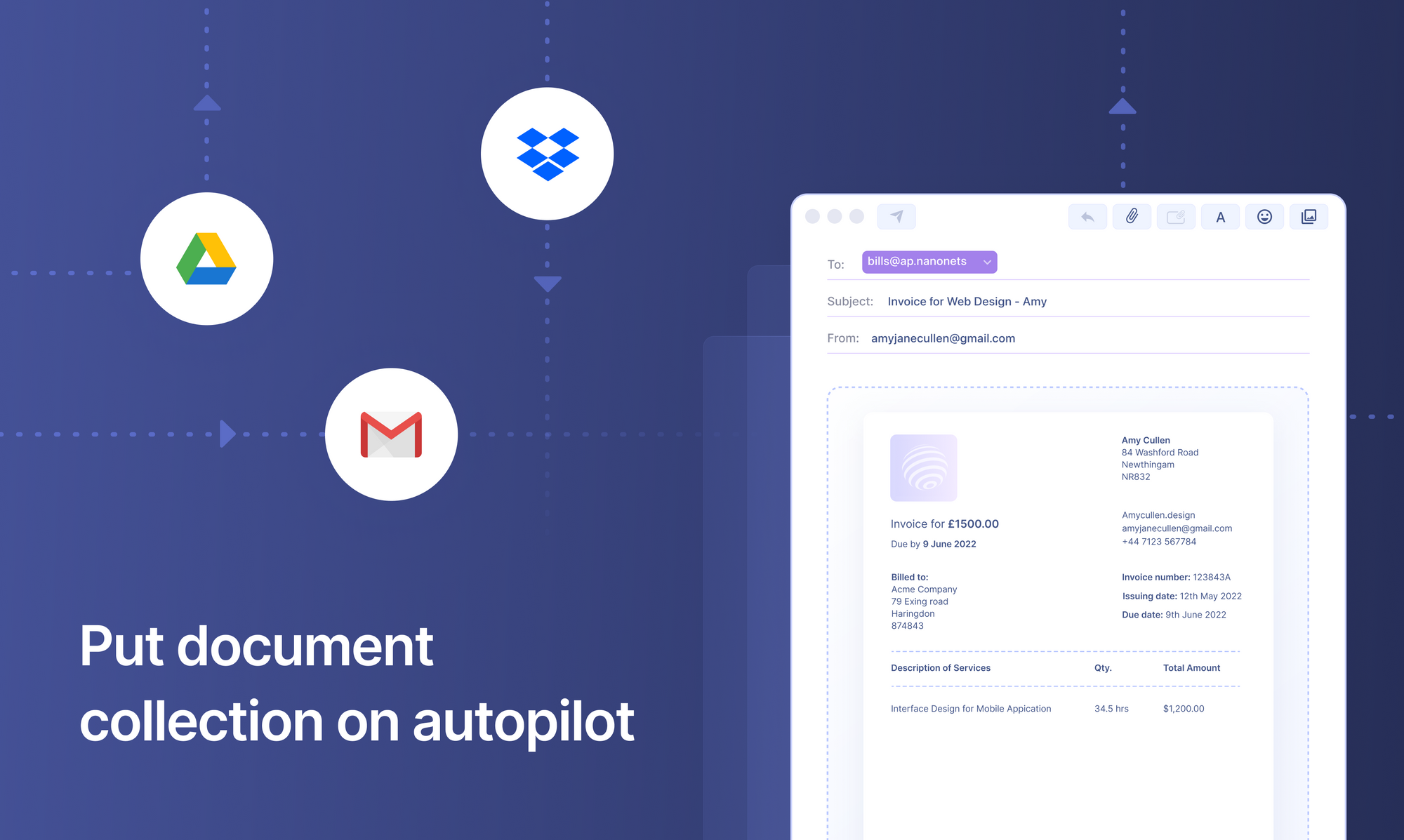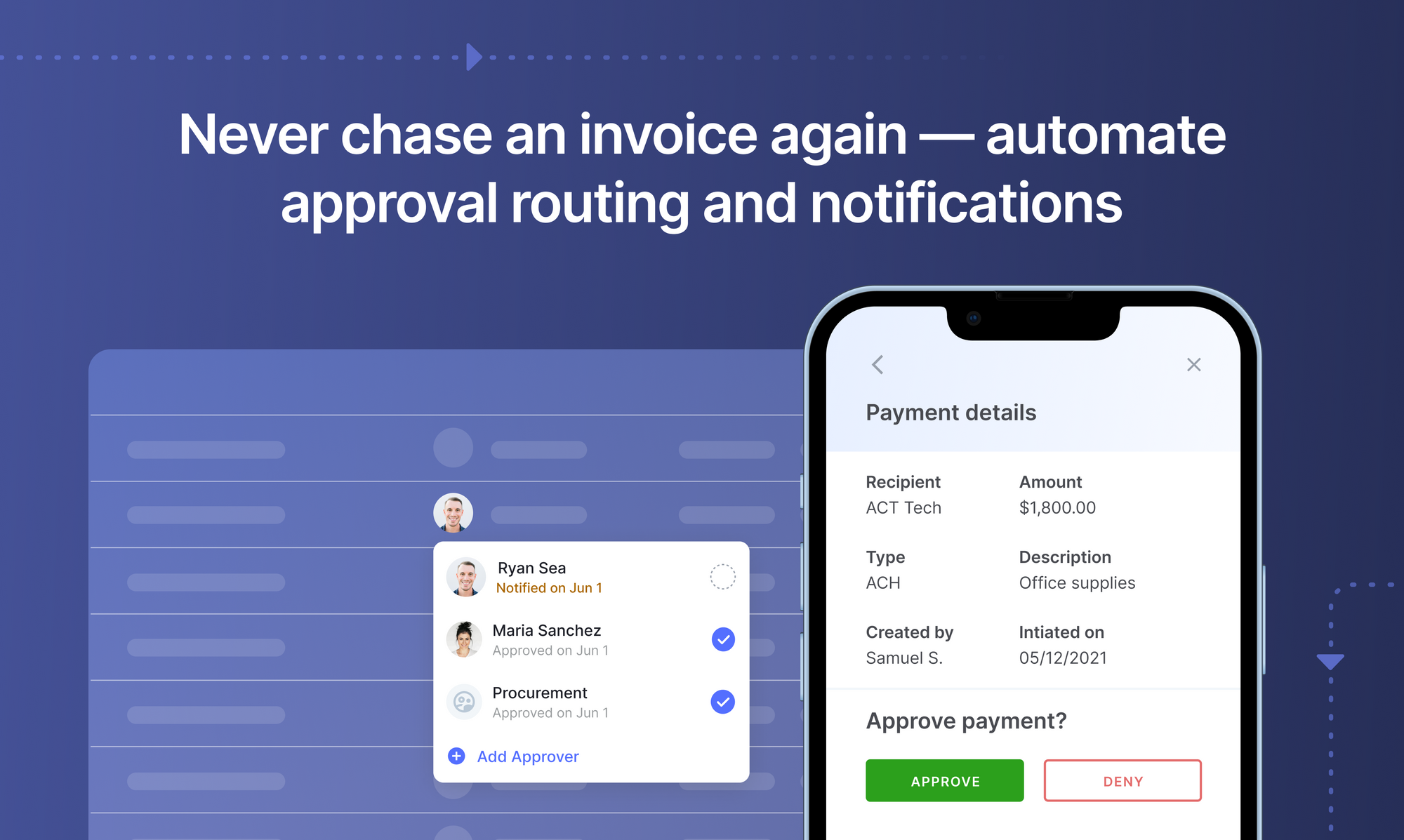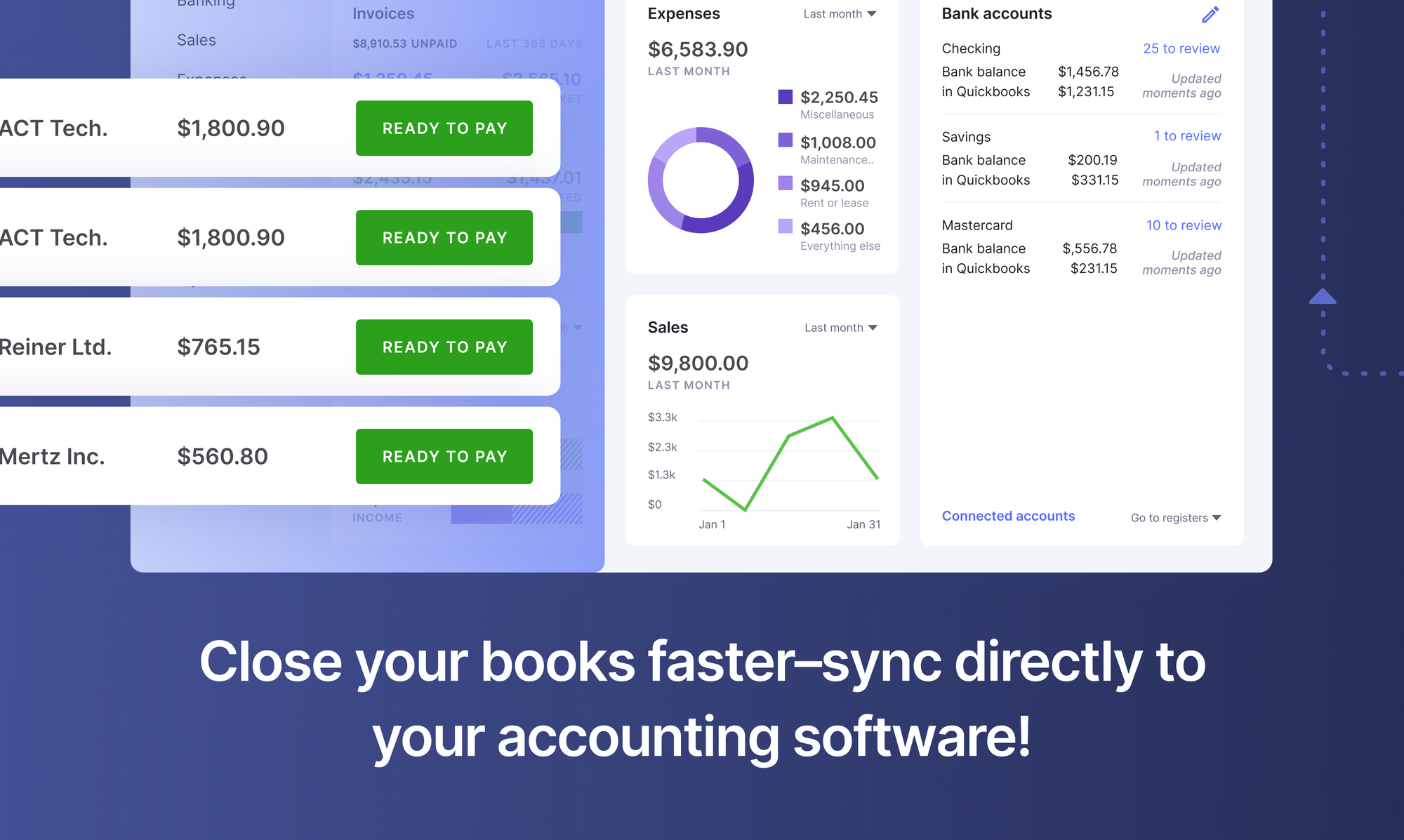A complete Guide to Accounts Payable Process in 2024
What is the accounts payable process?
The accounts payable process of a company is the management of its short-term payment obligations to vendors/suppliers.
The accounts payable or AP is the amount of money that a business owes to its vendors/suppliers for availing their goods/services. Accounts payable processing ensures timely payments to suppliers and vendors. The goal of the AP process is to ensure legitimacy and accuracy of any payment originating from the business to any supplier/vendor.
The full cycle of the accounts payable process includes capturing invoice data, appropriate GL coding, a 3 way match of invoices, approving or flagging invoices and finally processing payments.
The AP process is just one part of the entire procure to pay (P2P) process that covers all stages of activity from purchase requisition to procurement & vendor payments.
Most businesses have a separate AP department that handles all incoming bills/invoices and processes payments to vendors. Businesses might even occasionally opt for accounts payable outsourcing.
This can involve lots of paperwork and man-hours spent reconciling details across invoices, POs & receipts.
Modern approaches such as AP automation can help optimize and supercharge entire AP workflows and free up man-hours for higher value tasks.
What is the Full cycle accounts payable process?
Full cycle accounts payable is the end-to-end process where the accounts payable department manages a purchase from receiving and approving invoices to paying vendors. This comprehensive cycle ensures efficient handling of financial transactions, contributing to the seamless functioning of any business.
Why is accounts payable management important?
The Accounts Payable process encompasses almost all payments (except payroll) made by a business for goods and services. The AP maintains records of all financial aspects of purchases or procurement made by the company, which is crucial for auditing and tax purposes.
The main goals of the AP process are:
- To ensure that payments are legitimate and accurate
- To leverage early payments or dynamic discounts.
- To streamline cashflow by keeping metrics such as DPO in balance.
The management of accounts payable processes is critical to the efficient functioning of a business:
- It ensures prompt payment of bills, which is important for the creditworthiness of a company and helps establish healthy relationships with vendors.
- Prompt payments also prevent overdue charges, penalties, or late fees.
- Accounts payable processing keeps overspending in check, and prevents multiple/duplicate payments for the same product/service.
- It keeps track of the company’s needs and purchases, which helps avoid delays and interruption in the day-to-day functioning of the company.
- It consolidates all purchase actions for easy retrieval.
- AP processing eliminates fraud through stringent follow-up and checks at every stage of the procurement process.
- It also helps better management of cash flow by enabling payments only when due, using the credit facility offered by vendors.
The integration of internal controls in the AP process, especially in automated invoice processing eliminates fraudulent or inaccurate payments while ensuring that all invoices are accounted for.
Looking to automate your manual AP Processes? Get a 7-day free trial to see how Nanonets can help your team implement end-to-end AP automation.

What is the AP workflow process?
The scale of an organization's accounts payable processing workflow depends on:
- the number of vendors/service providers that cater to its needs
- the volume (and amount) of payments expected to be made over a short period of time
- the types documentation required to validate each purchase/transaction
The AP department may also work with other departments such as the purchase department in its operations.
A simple workflow of the AP process includes the following steps:
- Receive the bill/invoice from vendor
- Verify the data on the bill/invoice
- Approving the invoice or flagging errors
- Processing final payment
At the end of the process, the amount that was “payable” at the first step, would no longer be a liability. (Also explore, accounts payable vs notes payable)
There may be intervening processes involving purchase orders, verifications, and AP approvals.
The full cycle of the accounts payable process includes receiving the purchase order (PO) from the purchase department, receiving the invoice from the vendor, matching/validating the PO and the invoice, approval final payment to the vendor.
These steps are essential to avoid errors and fraud in expenditure.
Set up touchless AP workflows and streamline the Accounts Payable process in seconds. Book a 30-min live demo now.

Documents associated with the accounts payable processes
Depending on the scale of operations, the accounts payable procedures of a company may include many or all of the following documents:
Purchase order (PO)
The PO is a legally binding agreement issued by the company to the vendor, informing of the type of product/service ordered and the quantity and prices agreed upon. For large companies, multiple entities are involved in the PO process, including, the person/department requesting the goods/services, the purchase department, the accounts payable department, the receiving department, and the vendor.
Receiving report
The receipt of goods/services report is a confirmation of the acquisition of the ordered product/service from the vendor. The details on the receipt report must match those on the PO issued earlier.
Vendor Invoice
Concurrent to or after the receipt of the ordered goods, the business would receive the invoice/bill for the product from the supplier of the goods/services. At the business end, it is called the vendor invoice. The processing of the vendor invoice is the sole responsibility of the AP department, which verifies the details on the invoice by a three-way match among the PO, receipt report and vendor invoice and schedules payments after approval.
Vouchers
Vouchers are sometimes used to "vouch for" the completeness of the approval process – it is like an index to the supporting documents like PO, Receipt report, vendor invoice etc. and contains information on approvals, case numbers and other information related to that particular purchase.
All these documents are kept in an “open” file until the payment has been fully processed, after which it is labelled “closed”.
To illustrate, suppose that a buyer, Buyer Inc., requires 10 pen drives for the company:
-
It issues a purchase order to its supplier, Supplier Inc., for the ten items, at a price of, say, $15 per pen drive, to be delivered in five days.
-
The PO is generated by the purchase department, one copy of which is sent to Supplier Inc., one to the AP department, one to the beneficiary department and one to be retained by the purchase department.
-
When Supplier Inc. supplies the pen drives, a receiving report (or a receipt report) is prepared by the purchase department and the vendor invoice is filed by the AP department.
-
At this point, the AP department does a three-way match of the PO, receipt report and the purchase invoice to check if the description, quantity, cost, and terms match in all three documents.
-
Once the match is verified by the AP department, the payment is initiated.
Not all companies may have the three-way match, but a two-way match between the PO and the invoice is necessary to prevent mismanagement of funds.
Book this 30-min live demo to make this the last time that you'll ever have to manually key in data from invoices or receipts into ERP software.

Challenges in the AP Process
Here are some of the most common challenges faced by teams that tackle AP processing:
Time delays
This is particularly true with manual AP processing because paper documents must be moved across tables and departments. This can cause delays in processing an invoice and paying the vendor. Delays along the account payable cycle can snowball into late receipts of ordered items, poor credit rating, poor relationships with vendors and fees/fines.
Matching errors
The three-way match is necessary to ensure that all vendor invoices are paid correctly. Discrepancies can occur when there are data entry errors or incorrect billing information, which may take time to identify or fix.
Exception management
The account payable departments must deal with exceptions such as incomplete and non-matching information in invoices, which can lead to costly delays.
Unnecessary purchases
The absence of adequate controls and checkpoints in the accounts payable cycle can result in unnecessary or unauthorized purchases.
Fraud and theft
AP teams must constantly be vigilant against fraud and theft, both from within the company and without.
Missing documents
Paperwork can result in misplacement and loss of important documents like invoices. This can lead to a plethora of issues across the accounting payable cycle and month end close, starting with friction with the vendor to delayed operations.
Double payment
Inconsistencies and inefficiencies in documentation can cause a single invoice to be paid twice. Double payments can also occur if multiple ERPs or financial software are used, instead of a single integrated system.
Blind spots
Paper and manual processes are associated with opacity that prevents AP teams from tracking the cash flow of the company in real time.
Streamlining the accounts payable process & AP cycle
Accounts payable processing can be streamlined by centralizing all the relevant AP documents and filing them for easy access.
Such streamlining can be enabled by automated accounting or automated finance workflows. Automation serves the following purposes:
- Eliminates paper clutter, thereby reducing processing time and error rates
- Links POs and invoices with electronic payments, which presents the full picture of the accounts payable cycle
- Helps improve vendor management & prevent vendor fraud or theft
- Enables hassle-free three-way matching or 2-way matching
- Allows integration of the Accounts Payable process with other core business systems such as ERPs and CRMs
- Allows setting up of multiple checkpoints in the accounting payable cycle to avoid overspending or unnecessary purchases
- Warnings and alarms can be set when discrepancies are detected at any stage of the accounts payable workflow
- Allows for setting up payment deadlines
- Enables generation of periodic AP reports to understand the spending patterns of the company and prepare for audits and taxation
Tired of manually entering data into ERPs or accounting software? Let us show you how you can automate your entire AP data workflow in seconds.
How to manage the accounts payable process on auto-pilot?
AP automation or invoice automation software solves most if not all of the challenges that AP processes encounter. AP automation software like Nanonets, can help AP teams:
- reduce AP costs by 80% for enterprises
- process invoices 10x faster - optimise AP days
- eliminate matching errors arising out of manual checks/verifications
- identify exceptions, handle them intelligently our route them to the appropriate person
- weed out fraud, theft, double payments, maverick spend or any other inefficiency/loophole
AP teams across enterprises use Nanonets to power their AP automation and build an end-to-end automated month end accounting workflow. With Nanonets' AI, ML, and OCR capabilities, you can set up an AP workflow that automatically follows account payable best practices:
- Pulls files & documents from multiple sources - email, scanned documents, digital files/images, cloud storage, ERP etc.
- Reads & captures data from all documents accurately
- Match & reconcile expenses (match balances and SKU level information)
- Handle all expense workflows from creating an expense report to getting manager approvals
- And sync/integrate all the month end close process with any ERP, accounting software or business tool of your choice
- We readily integrate with Sage, Xero, Netsuite, QuickBooks, and more
- Make payments both domestically and globally, with 5 different payment methods - ACH, wire, credit card, wallet and neobanks.
Book a 30-min Zoom/Meet call to check out all the above over a live demonstration.



